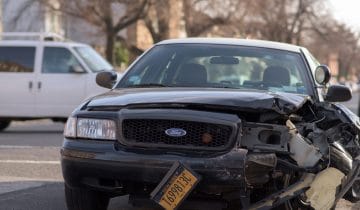While you’ve likely heard of defensive driving, offensive driving is just as common – but a lot worse. If you’re prone to frustration on the road or just plain road rage, you’ve likely engaged in some offensive driving. However, you don’t have to have these traits to be an offensive driver.
In this article, we’ll point out some specific examples of offensive driving behavior and discuss what makes it such a bad habit. Not only will it increase your likelihood of getting in a car accident, but it could raise your insurance rates if you make it too much of a habit. It’s also risky for other people on the road, your passengers, and your safety.
Speeding
Speeding is a bad driving habit that most drivers engage in at some point. While it’s pretty well-known that most speeding limits in the US are somewhat arbitrary, there are some areas where it’s just a bad idea to speed. Also, data shows that speeding is the number one cause of fatal crashes. If you’re trying to become a better, safer driver, then a good place to start is to slow down.
Speeding could be considered an offensive driving habit when you start to do it aggressively. Zooming in and out of traffic on the freeway, always staying in the left lane, and ignoring speed limits are all textbook examples of recklessly offensive and aggressive driving.
Not Completely Stopping
While it’s normal to be tempted to roll through a stop sign when you can’t see anyone coming, it’s not a good idea. Not completely stopping at intersections is a textbook example of offensive driving. First of all, it blatantly disregards the number one rule of intersections: always be sure you have the right of way before making your move. Assuming that everyone will stay out of your way, you’re making a textbook driving mistake.
Rolling through stop signs will also build up the habit. This can make it routine to never fully stop at stop signs or speed through yellow lights. Not only will this get you in legal trouble if law enforcement sees you doing it, but it could get you in an accident if a similarly daring driver has the same bright idea at the same moment. The same can be said for running through yellow lights. Eventually, a distracted driver might press on the accelerator as soon as the light turns green, and speeding through a yellow might result in an accident.
Not Respecting Vehicle Space
One of the cardinal driving rules is always to maintain proper space between your vehicle and other vehicles. Doing so is supremely easy, but some drivers still seem to need help with this due to selfishness or needing to get somewhere quickly. If you’re an offensive driver, you’re much more likely to tailgate other vehicles when you feel like they’re going too slow. Engaging in this aggressive driving behavior makes you much more likely to get in an accident. After all, what happens if they have to brake suddenly due to an obstacle that you can’t see? What if they just brake to check on you when you’re distracted?
Hogging the Left Lane
We’ve all been cruising on the highway in the left lane and see some speedster coming up behind that we laughed at. You think, “What’s that bozo doing?” as they pass you in the right lane. However, you don’t want to be either vehicle in this scenario. While it might make sense to stay in the left lane when driving at a speed above the limit and making good time, the truth is that the left lane is mainly for passing other vehicles on the highway.
If a police officer or a speed demon wants to pass every living soul on the road, that’s the lane they’re going to take. You can’t notice every single vehicle that’s around you or coming up behind you in your blind spot. Because of this, it’s a good idea to maneuver out of the left lane when you’ve passed the slowpoke you were stuck behind for seven miles.
Not Using Your Turn Signal
The average vehicle has several signaling devices, and offensive drivers tend to use none of them. If you’re trying to be safer on the road, you should be sure to use all the different visual and auditory signals you can. Never assume for a second that other drivers will notice you. It’s both foolish and dangerous to do so.
So, when switching lanes on the highway, use your turn signal. When you’re pulling out onto a busy road, use your turn signal. Use your turn signal when you’re making a turn or taking an exit. Always assume that other drivers have no idea what you’re doing. The same goes for your horn. While you don’t want to be honking at every other vehicle on the road, your horn is an excellent tool to let both other drivers and pedestrians know important information – and not just that the light has turned green. If there’s a potential road hazard or obstacle, you should try to warn other drivers with your car horn. Say they have a flat tire or smoke coming out of their exhaust – honk and let them know.
Always Remember This
Going from an offensive to an empathetic driver is important for preventing accidents on the road. It’s important to look out for others when you can. Remember that you’re not the only person behind the wheel when you’re on the road and consider that other drivers might make decisions you can’t foresee. You never want to assume that everyone else will adjust their driving to meet your standards, so stay safe and maintain a proper distance from other vehicles.




